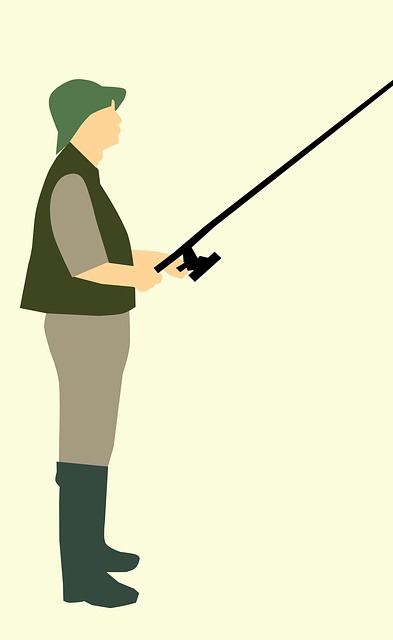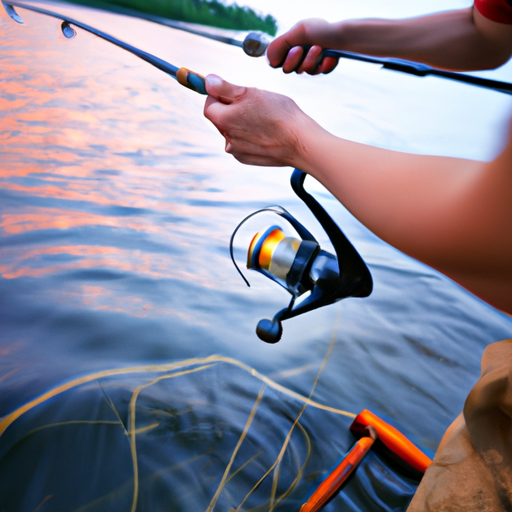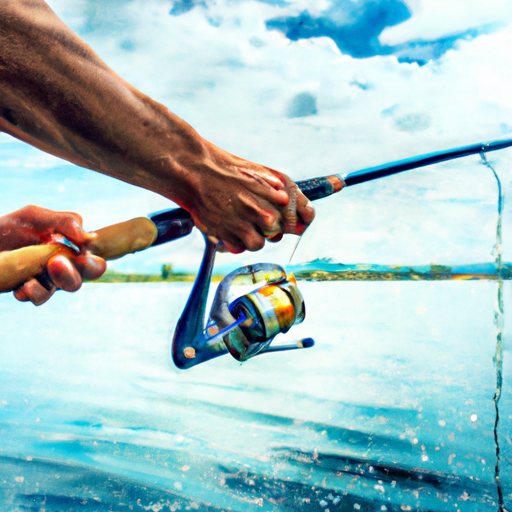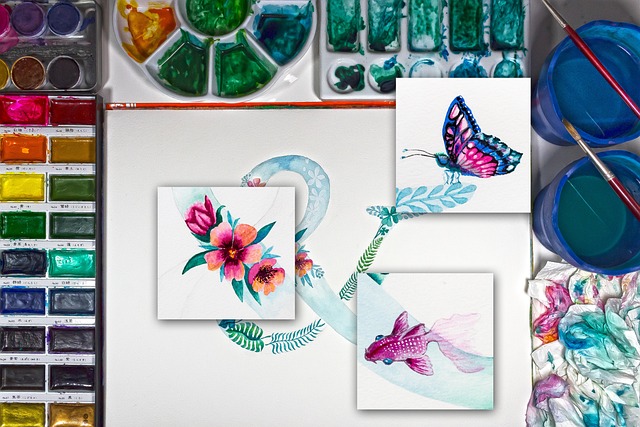Have you ever wondered what goes into casting fishing gear? Whether you’re a seasoned angler or just starting out, mastering the techniques for casting is crucial to a successful fishing trip. But with so many different types of gear and techniques to choose from, it can feel overwhelming. Fear not, I’ve got you covered! In this article, we’ll delve into the essential techniques for casting fishing gear.
Casting is more than just simply throwing your line into the water and hoping for the best. It requires a combination of skill, practice, and a good understanding of your gear. From understanding the different types of casting techniques to knowing how to adjust your gear for optimal performance, there is a lot to learn. But don’t worry, I’ll break it down for you step by step. By the end of this article, you’ll have a solid grasp on the essential techniques for casting fishing gear, and you’ll be ready to hit the water with confidence. So, let’s dive in and explore the wonderful world of casting fishing gear! fishing gear?
Understanding Fishing Gear and Equipment
Fishing is a timeless activity that has captured the hearts of countless individuals. Whether you are a seasoned angler or just starting out, understanding the different types of fishing gear and equipment is essential to reeling in that prized catch. In this article, we will explore the importance of using the right fishing gear, the common components of fishing gear, and techniques for mastering the art of casting.
Different Types of Fishing Gear
Before we delve into the essential techniques for casting fishing gear, let’s first familiarize ourselves with the various types of fishing gear available. The type of gear you use largely depends on the fishing method you prefer.
-
Fishing Rods: Fishing rods are an integral part of any angler’s arsenal. They come in a variety of materials, including graphite, fiberglass, and carbon fiber. Each type offers different levels of sensitivity, strength, and flexibility. Understanding fishing rod specifications is crucial in selecting the right one for your needs.
-
Fishing Reels: Fishing reels are devices used to hold and release fishing line. They can be further classified into spinning reels, baitcasting reels, and fly reels, each with its own advantages and specific applications. Choosing the suitable reel type and matching it with the rod is vital for achieving optimal performance.
-
Terminal Tackle: Terminal tackle refers to the end of the fishing line, which includes hooks, weights, swivels, and other accessories. These components play a crucial role in attracting and hooking fish effectively.
Importance of Using the Right Fishing Gear
Using the right fishing gear is paramount to a successful fishing expedition. The right gear not only ensures the proper presentation of your bait but also enhances your chances of hooking and landing fish. Here are some reasons why using the right gear is important:
-
Increased Sensitivity: Fishing gear that is tailored to your target species and fishing conditions provides better sensitivity, allowing you to detect even the slightest nibble or bite.
-
Improved Casting Distance and Accuracy: The right gear, when used correctly, enables you to cast your bait or lure further and more accurately, increasing your chances of attracting fish and making successful catches.
-
Enhanced Fish Fighting Ability: A well-balanced fishing rod and reel combination can make all the difference when it comes to fighting and landing fish. The right gear ensures that you have the power and control needed to reel in your prize catch.
Common Components of Fishing Gear
Now that we have an understanding of the different types of fishing gear and the importance of using the right equipment, let’s take a closer look at the common components of fishing gear that are essential for casting.
-
Fishing Rod: The fishing rod consists of several components, including the butt, grip, reel seat, guides, and tip. Each component contributes to the overall performance and functionality of the rod. Understanding these components and their role in casting is crucial for achieving accurate and efficient casts.
-
Fishing Reel: The fishing reel is responsible for holding the fishing line, controlling drag, and facilitating the retrieval of fish. It is important to select a reel that is compatible with your fishing rod and provides a smooth and reliable operation.
Mastering the Art of Casting
Casting is a fundamental skill in fishing that involves propelling the bait or lure into the water to attract fish. While it may seem simple, mastering the art of casting requires practice, technique, and an understanding of various casting techniques.
What is Casting in Fishing?
Casting in fishing refers to the act of propelling your bait or lure into the water using a fishing rod and reel. The goal is to place the bait or lure in a specific area where fish are likely to be present, enticing them to bite.
Importance of Proper Casting Techniques
Proper casting techniques are crucial for several reasons:
-
Accuracy: Casting accurately enables you to place your bait or lure precisely where the fish are, increasing your chances of attracting them.
-
Distance: Casting with proper technique allows you to cover a larger area and reach fish that are further away from the shoreline or boat.
-
Presentation: Effective casting techniques ensure that your bait or lure lands softly and naturally, mimicking the movements of natural prey and enticing fish to strike.
Factors to Consider in Casting Fishing Gear
When casting fishing gear, several factors should be taken into consideration to achieve optimal results:
-
Wind: Wind direction and speed can significantly affect your casting distance and accuracy. Adjusting your casting technique to compensate for wind conditions is essential for successful casts.
-
Rod Length: The length of your fishing rod plays a role in the distance and accuracy of your casts. Longer rods generally provide greater casting distance, while shorter rods offer better control and accuracy.
-
Timing: Understanding the proper timing and release of the line during your cast is essential. Timing your cast correctly ensures that your bait or lure lands in the intended target area.

This image is property of pixabay.com.
Choosing the Right Fishing Rod
Selecting the right fishing rod is crucial for achieving accurate and efficient casts. Understanding fishing rod specifications, such as length, power, action, and flexibility, is key to finding the most suitable rod for your needs.
Understanding Fishing Rod Specifications
Fishing rod specifications provide valuable insights into the rod’s performance characteristics. Here are some common fishing rod specifications and their significance:
-
Length: The length of a fishing rod determines its casting distance and leverage. Longer rods are ideal for casting greater distances, while shorter rods offer better control and accuracy.
-
Power: Power refers to the rod’s strength and its ability to handle heavy loads. It is typically categorized as light, medium, or heavy. Lighter power rods are suitable for smaller fish species, while heavier power rods are designed for larger and more powerful fish.
-
Action: Action describes how a fishing rod flexes and where the flex occurs along the rod’s length. Common action classifications include slow, medium, and fast. Slow action rods bend throughout their length, medium action rods bend primarily in the upper half, and fast action rods bend primarily in the top third.
Finding the Appropriate Rod Length and Power
To select the appropriate rod length and power, consider the following factors:
-
Fishing Environment: If you plan on fishing in open waters or larger bodies of water, a longer rod will offer greater casting distance and better leverage. In contrast, shorter rods are more suitable for tight spaces or areas with overhead obstacles.
-
Target Species: The species of fish you intend to catch also plays a role in selecting the appropriate rod. Smaller fish species require lighter power rods, while larger and more powerful fish require heavier power rods.
-
Personal Preference: Personal preference and individual casting style should also be considered when selecting the rod length and power. Experimenting with different rod lengths and powers can help you find the combination that feels comfortable and suits your casting technique.
Evaluating the Action and Flexibility
The action and flexibility of a fishing rod are crucial considerations when it comes to casting. Here’s how different action and flexibility characteristics affect your casting technique:
-
Slow Action and Flexible Rods: Slow action and flexible rods offer a more forgiving casting experience, making them ideal for beginners or anglers who prioritize ease of use over long casting distances. These rods are also suitable for casting lighter lures or baits.
-
Medium Action and Moderate Flexibility Rods: Medium action and moderate flexibility rods strike a balance between casting distance and control. They provide adequate power to cast medium-sized baits or lures while offering enough flexibility to handle larger fish.
-
Fast Action and Stiff Rods: Fast action and stiff rods offer exceptional casting distance and are suitable for casting heavy baits or lures. These rods provide the necessary power to land larger fish but may require more skill and practice to master the casting technique.
Remember that the appropriate action and flexibility ultimately depend on your fishing style, target species, and personal preference.
Selecting the Suitable Fishing Reel
Finding the right fishing reel to complement your rod is essential for achieving effective and efficient casts. Understanding the different types of fishing reels, matching the reel with the rod, and recognizing the importance of gear ratio and drag system will greatly contribute to your casting success.
Types of Fishing Reels
Fishing reels can be broadly divided into three main types:
-
Spinning Reels: Spinning reels are the most commonly used reels and are suitable for a wide range of fishing applications. They are easy to use, offer good casting distance, and provide versatile drag systems.
-
Baitcasting Reels: Baitcasting reels are more advanced and offer greater control and accuracy. They are commonly used for targeting larger fish species and are popular among experienced anglers.
-
Fly Reels: Fly reels are specifically designed for fly fishing, which involves casting lightweight artificial flies rather than traditional bait or lures. These reels require specialized casting techniques and are commonly used in freshwater fishing.
Matching the Reel with the Rod
Matching the reel with the rod is crucial to achieve optimal performance and casting efficiency. Here are some guidelines for selecting the suitable fishing reel:
-
Rod and Reel Balance: The weight and balance between the rod and reel should be taken into consideration. An imbalanced combination can result in casting difficulties and unnecessary strain on your wrist and arm.
-
Line Capacity: The line capacity of the reel should be compatible with the fishing line you intend to use. Ensure that the reel can accommodate enough line to handle the target species and fishing environment.
-
Gear Ratio: The gear ratio of a fishing reel determines the speed of retrieval. A high gear ratio enables quick retrieval, while a low gear ratio provides more power. Select a gear ratio that suits your preferred fishing style and target species.
Understanding Gear Ratio and Drag System
Gear ratio and drag system are important factors to consider when selecting a fishing reel:
-
Gear Ratio: The gear ratio of a fishing reel indicates the number of times the spool rotates for each full handle turn. For example, a 5.2:1 gear ratio means that the spool rotates 5.2 times for every complete handle turn. Higher gear ratios allow for faster retrieval, while lower gear ratios provide more power.
-
Drag System: The drag system on a fishing reel controls the resistance applied to the fishing line when a fish pulls. It allows you to tire out a fish while maintaining control. A smooth and reliable drag system is crucial when casting and fighting fish.
Remember, the fishing reel should be compatible with your rod to ensure optimal performance and casting efficiency.

This image is property of pixabay.com.
Exploring Different Casting Techniques
Now that we have covered the fundamentals of fishing gear and selecting the appropriate equipment for casting, let’s delve into various casting techniques that are essential to becoming a successful angler. Each technique serves a specific purpose and requires practice to master.
Overhead Casting
Overhead casting is the most common casting technique used in fishing. It involves raising the rod overhead, bringing it forward in a fluid motion, and releasing the line to propel the bait or lure towards the intended target area. Overhead casting provides accuracy and distance, making it suitable for a wide range of fishing applications.
Sidearm Casting
Sidearm casting involves casting the bait or lure horizontally, parallel to the water surface. This technique is particularly useful when fishing in areas with overhanging vegetation or low clearance. Sidearm casting allows you to cast under obstacles and present your bait or lure effectively.
Roll Casting
Roll casting is a useful technique for fishing in tight spaces or when backcasting is limited. It involves using the tension of the water’s surface to load the rod and propel the line forward. This technique is commonly used in fly fishing and can be an effective casting method in areas with limited casting space.
Pitching and Flipping
Pitching and flipping are casting techniques used to target specific areas, such as under docks, overhanging trees, or vegetation. These techniques involve short, controlled casts that require accuracy and precision to present the bait or lure in tight spaces or cover.
Skipping and Bouncing
Skipping and bouncing are techniques used to create a natural and enticing movement of the bait or lure across the water’s surface. They involve casting the bait or lure in a skipping motion, causing it to bounce and imitate the movement of fleeing prey. These techniques can be effective for attracting fish that are near the water’s surface, such as bass or pike.
Mastering Casting Techniques
Now that we have explored the different casting techniques, let’s delve into the essential tips and techniques to master your casting skills.
Proper Grip and Stance
Having the proper grip and stance is crucial for maintaining control and accuracy during your casts. Here are some tips to consider:
-
Rod Grip: Hold the fishing rod with a relaxed, firm grip. Avoid gripping the rod too tightly, as this can restrict the fluidity of your casting motion.
-
Hand Placement: Place your dominant hand on the reel handle and your non-dominant hand above the reel seat, gripping the rod. Find a comfortable grip that allows you to cast without strain or discomfort.
-
Stance: Stand with your feet shoulder-width apart, distributing your weight evenly. Position yourself for balance and stability, allowing for smooth and controlled casting motions.
Casting Motion and Timing
Mastering your casting motion and timing is essential for accurate and efficient casts. Here are some tips to improve your casting technique:
-
Backcast: Bring the rod behind you, loading it with potential energy for the forward cast. Maintain a smooth and controlled motion, avoiding excessive force or sudden jerks.
-
Forward Cast: Utilize a fluid and controlled motion to bring the rod forward, releasing the line at the appropriate timing. Aim to achieve a straight-line path and a smooth, consistent acceleration throughout the cast.
-
Timing: Timing is crucial in executing successful casts. Practice different casting techniques and adjust your timing to achieve optimal results. Timing is especially important when casting in windy conditions or when using heavier baits or lures.
Adjusting Techniques for Different Conditions
Casting techniques should be adjusted according to the fishing conditions. Here are some factors to consider when adjusting your casting technique:
-
Wind: Wind can significantly affect your casting distance and accuracy. Adjust your casting technique to compensate for wind conditions, such as using a lower trajectory or increasing casting force.
-
Obstacles: Fishing in areas with obstacles, such as overhanging trees or vegetation, requires adjustments to your casting technique. Utilize sidearm casting, pitching, or flipping techniques to effectively present your bait or lure in tight spaces.
-
Water Conditions: The clarity and depth of the water can influence your casting approach. Adjust the speed, direction, and depth of your casts to match the prevailing water conditions.
-
Fish Behavior: Understanding the behavior of your target fish species can help you tailor your casting technique to attract their attention. Consider the depth at which they are feeding, the time of day, and the type of prey they are likely to be targeting.

This image is property of pixabay.com.
Understanding Casting Distance and Accuracy
Casting distance and accuracy play a vital role in successful fishing. Here’s why they are important and the factors that can affect them:
Importance of Casting Distance and Accuracy
-
Cover More Water: Casting with greater distance allows you to cover more water, increasing your chances of encountering fish.
-
Reach Difficult Spots: Casting with accuracy enables you to reach difficult and hard-to-access spots, such as under docks or between vegetation, where fish may seek cover or prey.
-
Minimize Disturbance: Casting with accuracy reduces the likelihood of creating disturbances that might scare fish away. The ability to place your bait or lure precisely where you want it allows for a more natural presentation.
Factors Affecting Casting Distance
Several factors can affect your casting distance:
-
Rod Length and Power: Longer rods generally provide greater casting distance, while shorter rods offer better control and accuracy. Adjusting the length and power of your rod according to your fishing needs can optimize your casting distance.
-
Line Weight and Type: The weight and type of fishing line you use can affect your casting distance. Lighter lines generally enable longer casts, while heavier lines can limit your casting distance.
-
Casting Technique: Proper casting technique, including timing, acceleration, and release, greatly affects your casting distance. Practice and refine your casting technique to maximize your casting distance.
Practicing for Improved Accuracy
To improve your casting accuracy, consider the following tips:
-
Practice in Different Conditions: Practice casting in various conditions, such as different wind speeds, water depths, and fishing environments. This will help you become adaptable and accurate in different scenarios.
-
Use Targets: Set up targets, such as floating markers or objects in the water, to practice your accuracy. Aim to hit the target consistently and adjust your technique as needed.
-
Experiment with Different Lures and Baits: Different lures and baits have different weights and properties. Practice casting with various lures and baits to familiarize yourself with their flight characteristics and adjust your casting technique accordingly.
Maintaining and Caring for Fishing Gear
Proper maintenance and care for your fishing gear are essential to ensure its longevity and optimal performance. Here are some tips for maintaining and caring for your gear:
Cleaning and Proper Storage
-
Rinse After Use: After each fishing trip, rinse your fishing gear, including rods, reels, and terminal tackle, with fresh water to remove saltwater, dirt, and debris. Pay close attention to the guides and reel mechanisms.
-
Dry Thoroughly: Ensure that your fishing gear is completely dry before storage to prevent the accumulation of moisture, which can lead to corrosion and damage.
-
Store in a Dry Environment: Store your fishing gear in a dry place, away from excessive humidity and temperature fluctuations. Consider using rod racks, reel covers, and tackle boxes for organized and protected storage.
Routine Maintenance and Inspections
-
Regularly Check Rod Guides: Inspect the rod guides for any signs of wear or damage, such as cracks or breaks. Damaged guides can compromise the performance and lifespan of your fishing gear.
-
Clean and Lubricate Reel Components: Clean and lubricate reel components, such as the spool, bail mechanism, and drag system, on a regular basis. Follow the manufacturer’s recommendations for cleaning and lubrication products.
-
Replace Worn or Damaged Components: Regularly inspect the rod, reel, and terminal tackle for any signs of wear, damage, or corrosion. Replace worn or damaged components to maintain optimal performance and prevent accidents.
Replacing or Repairing Damaged Components
If your fishing gear sustains significant damage, it may be necessary to replace or repair the affected components. Consider the following options:
-
Professional Repair Services: If you are unsure of how to repair or replace damaged components, seek the assistance of professional fishing gear repair services. They can provide expert advice and perform necessary repairs to restore your gear’s functionality.
-
DIY Repairs: If you are confident in your repair skills, you may opt to repair or replace damaged components yourself. However, exercise caution and ensure that you have the necessary tools, equipment, and expertise to perform the repairs safely and effectively.
Taking the time to maintain and care for your fishing gear will not only extend its lifespan but also ensure that it performs optimally during your fishing trips.

Safety Measures for Casting Fishing Gear
While fishing can be an enjoyable and rewarding activity, it is important to prioritize safety when casting fishing gear. Here are some safety measures to keep in mind:
Awareness of Surroundings
-
Observe Your Surroundings: Before casting, take a moment to survey your surroundings for any potential hazards, such as other anglers, boats, or obstacles. Ensure that you have enough space to safely execute your cast.
-
Communicate with Others: If there are other anglers or individuals in close proximity, communicate your intentions before casting. This will help prevent accidents and ensure everyone’s safety.
Proper Handling of Sharp Hooks and Lures
-
Use Protective Gear: When handling hooks and lures, consider using protective gear, such as gloves or pliers, to minimize the risk of injury. This is especially important when removing hooks from fish or when changing lures.
-
Watch Your Hook: Be mindful of the position of your hook at all times, especially when casting. Keep your hooks covered or secure them properly to prevent accidental pricks or injuries.
Wearing Protective Gear
-
Eye Protection: Wearing polarized sunglasses or safety glasses can help protect your eyes from flying hooks, lures, or other debris that may pose a risk during casting or while on the water.
-
Sun Protection: Proper sun protection, such as wearing a wide-brimmed hat, sunscreen, and lightweight clothing, is essential to prevent sunburn and sun damage during long fishing trips.
Remember, safety should always be a priority when casting fishing gear. By staying aware of your surroundings and taking necessary precautions, you can enjoy a safe and fulfilling fishing experience.
Conclusion
Mastering the art of casting fishing gear involves understanding the different types of fishing gear, selecting the appropriate equipment, and practicing essential casting techniques. By using the right gear and employing proper casting techniques, you can increase your chances of success on the water. Remember to maintain and care for your fishing gear to ensure its longevity and optimal performance. Prioritize safety and take necessary precautions when casting fishing gear. With continuous practice and improvement, you can become a skilled angler and fully enjoy the incredible world of fishing.

